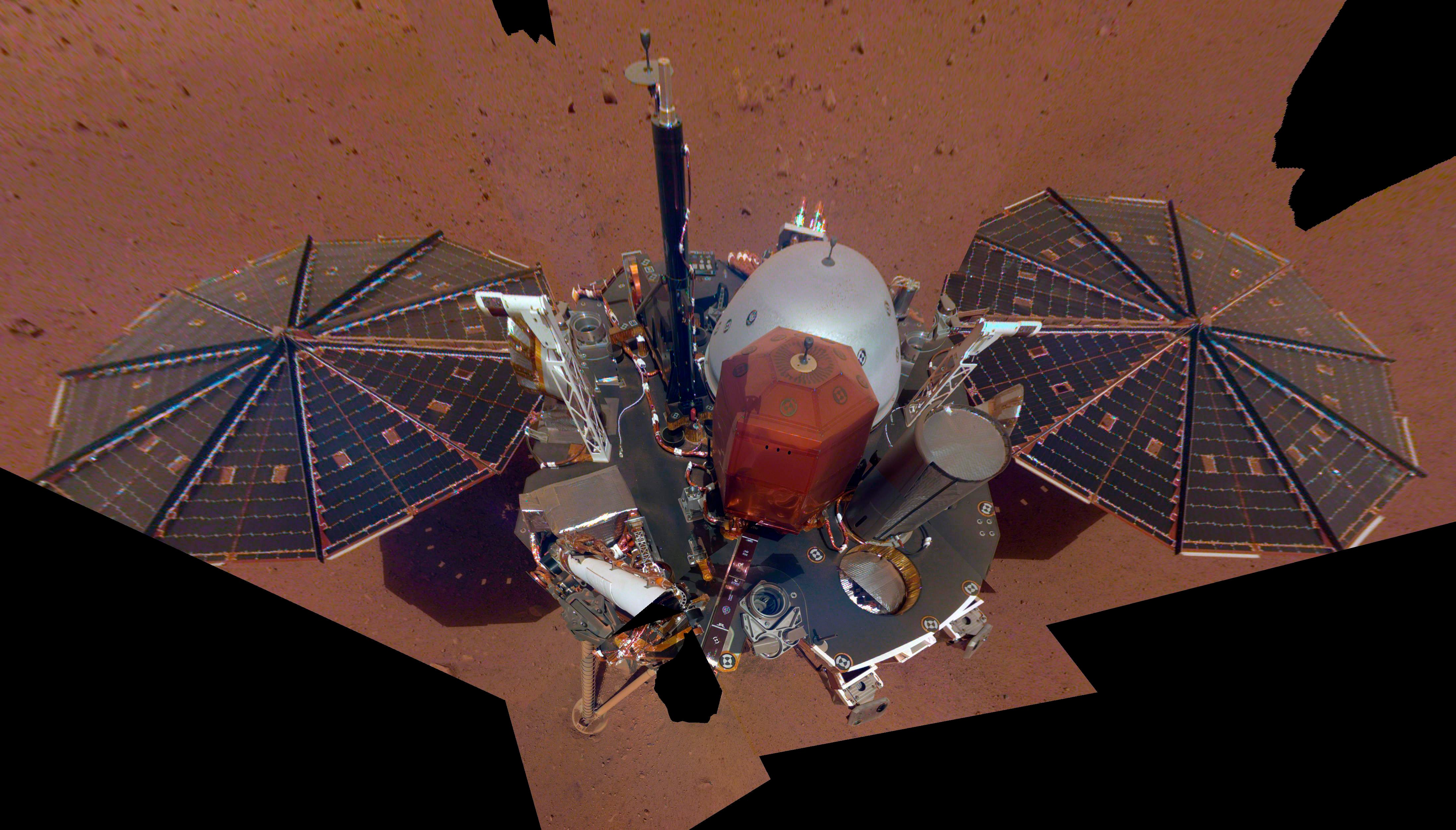Nasa records first sounds of meteorites hitting Mars
Nasa’s InSight lander has pinpointed the sites of three meteorite impacts based on the shock waves generated as the space rocks entered the planet’s atmosphere and impacted its surface

Nasa’s Mars InSight lander has detected the first ever seismic and acoustic waves generated by meteorite strikes on another planet and located the impact crate sites.
In a new paper published Monday in the journal Nature Geoscience, an international team of researchers detail findings that are both first in extra-terrestrial planetary science and represent a rare observation even on Earth where few meteorite impacts have been recorded in the way InSight detected impacts on Mars. While the seismic and acoustic waves from meteors bursting in Earth’s atmosphere have been observed many times, the researchers write in the paper, “a hypervelocity impact with the ground was recorded only once.”
The new findings can help researchers better understand the makeup and structure of the Martian crust, as well as provide insights into how meteorites shape the surface of Mars directly.
“Meteoroid impacts shape planetary surfaces and seed their atmospheres with exogenous volatiles,” the researchers write. “The mechanical waves generated by impacts are used to infer the structure of the atmosphere and the planet’s interior and to investigate current planetary impact processes.”
Nasa’s InSight, an acronym for Interior Exploration using Seismic Investigations, Geodesy and Heat Transport, arrived on Mars on 26 November 2018. A stationary lander rather than a rover, InSight carries seismology and heat sensing instruments to study the internal structure of the Red Planet, rather than mapping or analyzing its surface.
Past findings from the InSight mission have given scientists a new understanding of the internal structure of Mars, and the mission also recorded the most powerful quake ever observed on another planet.
The new research is based on recordings made by Insight in 2021 and, when four different meteors entered the Martian atmosphere at high speed before impacting on the ground. Such meteors generate shockwaves in the atmosphere that impact the ground, generating seismic waves, followed by more waves from the eventual impact on the ground.
By measuring the arrival times of the different clusters of shock waves from the meteorites first bursting in air, and then their impacts, the researchers were able to gauge their distance and likely location. They were then able to locate the impact craters of three of the four meteorites using imagery from the Mars Reconnaissance Orbiter, a satellite placed in Mars orbit to study the Red Planet in 2006.
The findings suggest seismology is can be both a tool for studying planetary interiors and for studying meteorite impacts on other planets, the researchers write in the paper, noting that the seismic waves from such impacts can also be used to learn about the structure of the deep interior of Mars, similar to how InSight previously used waves from Mars quakes.
Future studies may require new tools or missions to Mars and other planets in the solar system: Nasa has determined the InSight mission will end in 2022, as dust collecting on the lander’s solar panels will soon prevent the lander from generating enough power to conduct further science.
Subscribe to Independent Premium to bookmark this article
Want to bookmark your favourite articles and stories to read or reference later? Start your Independent Premium subscription today.

Join our commenting forum
Join thought-provoking conversations, follow other Independent readers and see their replies